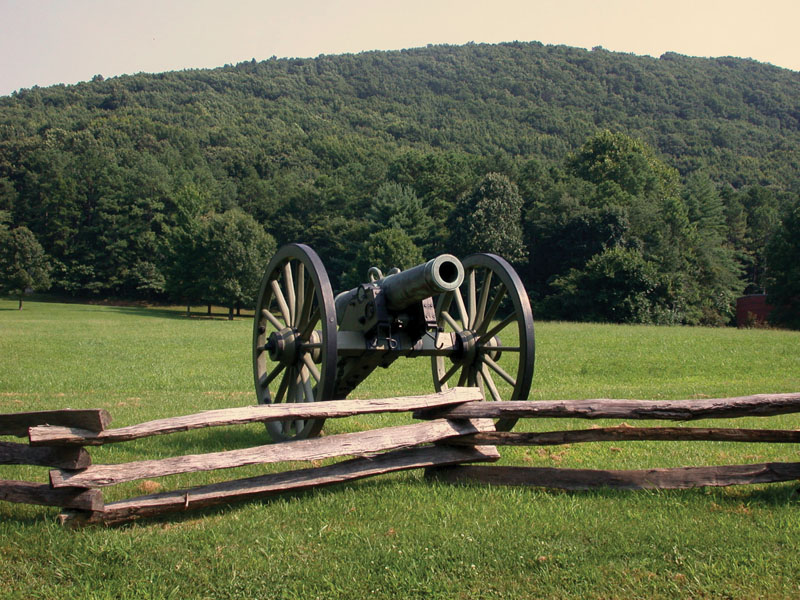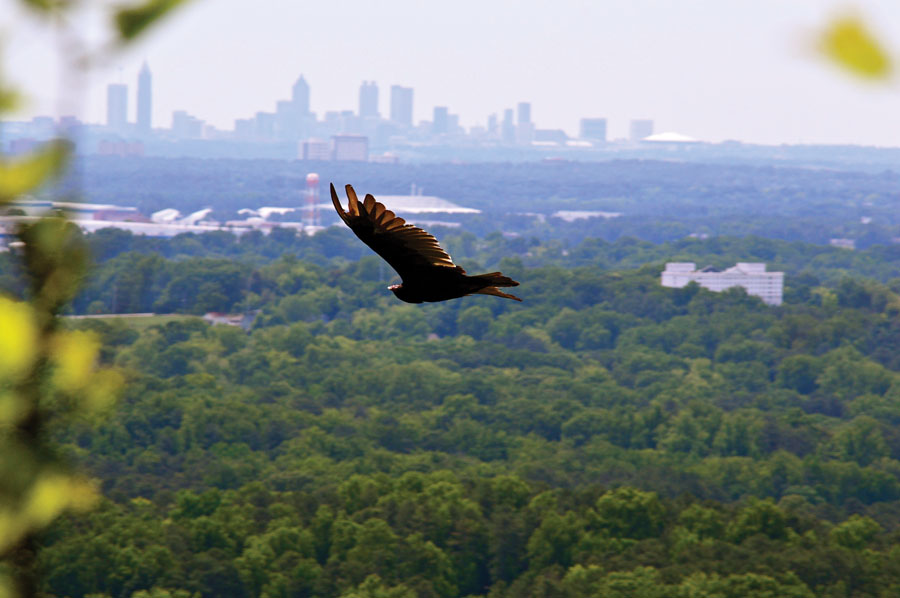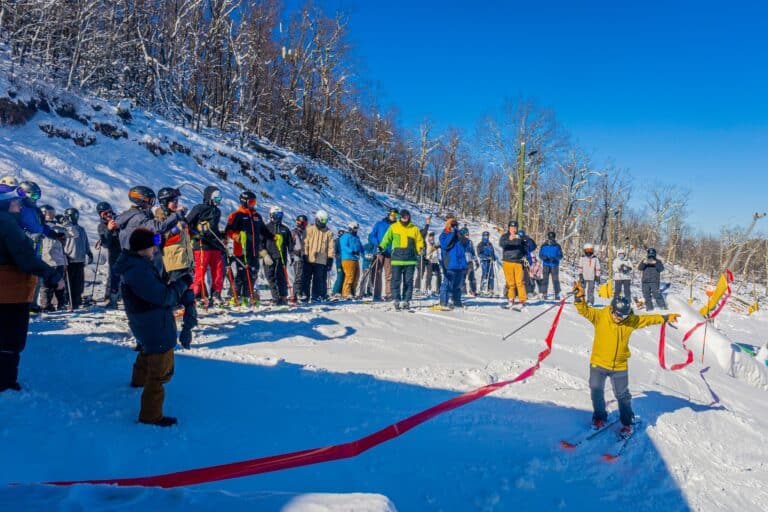I’m half way up Kennesaw Mountain, one of the last bumps in the Appalachian chain, just north of Atlanta, when it hits me: I’m the only white person in the forest. It’s a strange, but awesome realization, particularly given my location.
I’m running the main trail that switchbacks up the north face of the 1,808-foot hill, climbing 700 vertical feet in under a mile. It’s a hump of a run, and judging by the crowd, it’s also one of the most popular trails in the state. Families are hiking together, groups of runners are chatting, kids are struggling to hold onto dogs, while clusters of women power walk with their hands on their hips. And it plays out like a scene from the United Nations—Hispanics, African Americans, Asians, and Middle Easterners. I hear at least three different languages as I climb slowly up the hill.
I grew up at the base of this mountain, spending countless weekends hiking the trails and playing in the fields. Picture kids climbing on cannons and teenagers throwing Frisbees in the grass. This was the ‘80s in the South, so picture lots of jean shorts and mullets on those kids. And I’m talking about “white” kids here. When I was young, Kennesaw was a predominantly rural town—a few new neighborhoods scattered between farms. We had one park, one elementary school, one restaurant (a Dairy Queen), and one black family. Mine was a childhood full of sandlot baseball, forts in the woods, and Sunday dinners with the priest. And a hell of a lot of racial tension, most of which seemed to be held over from the Civil War.
 When you grow up on the edge of Atlanta, it’s hard to avoid the Civil War. The ghosts were lurking around ever corner. Kennesaw Mountain was one of the pivotal battles in the war. My brothers and I would find 150-year-old bullets in our backyard. One of my mother’s favorite places to walk was the Confederate Cemetery, where thousands of nameless white headstones rose from the rolling grass, like rows of teeth. In elementary school, we took the same field trip every year, walking from our school to the Southern Museum of Civil War History in downtown Kennesaw.
When you grow up on the edge of Atlanta, it’s hard to avoid the Civil War. The ghosts were lurking around ever corner. Kennesaw Mountain was one of the pivotal battles in the war. My brothers and I would find 150-year-old bullets in our backyard. One of my mother’s favorite places to walk was the Confederate Cemetery, where thousands of nameless white headstones rose from the rolling grass, like rows of teeth. In elementary school, we took the same field trip every year, walking from our school to the Southern Museum of Civil War History in downtown Kennesaw.
You could say the Civil War never actually ended in Kennesaw, Georgia. It was just on pause. Older folks referred to the conflict as “The War of Northern Aggression.” The town’s annual summer festival centered around a massive battle re-enactment. For decades, the most looming figure in Kennesaw was a guy named “Wild Man.” He owned a Civil War relic shop downtown, dressed every day as a Confederate soldier, and wore two guns strapped to his hips. Imagine seeing that guy in line at the Dairy Queen. Meanwhile, the KKK still handed out flyers at the stoplight when I was a kid. At this point in history, they weren’t allowed to wear their white masks anymore, but they could still disseminate hate speak.
The predominantly white town and its surrounding county fought hard over the years to keep Atlanta’s public rail system from reaching its borders. Here’s how that particular train of thought has played out in the past: Poor people ride public transportation, and by poor people I mean minorities, and by minorities I obviously mean criminals…It’s as if Donald Trump was advising our city council. But wait, it gets better: Kennesaw made national news when the city council passed a law requiring every homeowner to own a gun in 1982. (Good law-abiding citizens that we were, my father bought a 22-caliber rifle, which he immediately disassembled.) Some people still call Kennesaw, “Gun Town, USA.” Awesome.
So yeah, given the town’s history, I’m surprised to be the only white person on Kennesaw Mountain as I run the rocky doubletrack through Civil War earthworks and past historical placards. I spend a lot of time on trails all over the country, and the fact is, most people I see look just like me. They’re generally in better shape and have less gray in their beard, but we’re the same shade of pale. A 2013 participation report by the nonprofit Outdoor Foundation shows 70% of outdoor recreation participants are white. The national park service reports only one in five visitors as being “nonwhite.”
I don’t doubt the validity of these statistics one bit, but if you did a participation study of Kennesaw Mountain on the days that I’ve run there over the last few years, you’d probably find inverse numbers. Maybe each day that I’ve run on that mountain is an anomaly, but I’d say one in five visitors are white. Maybe. Probably more like one in 10, which is incredible for a couple of reasons.
First, as the demographics of the U.S. evolve, the outdoor industry, National Park Service, and various recreational groups are scrambling to find ways to encourage minorities to take up backpacking, visit parks and buy mountain bikes. They develop outreach programs and advertising campaigns dedicated to certain racial groups. Because, you know, when the U.S. is made up of mostly “nonwhites,” who will buy all of the performance layers with thumbholes?
The Outdoor Industry could learn something from the diversity at Kennesaw Mountain. Mainly, participation in outdoor recreation has more to do with access than “cultural identification.” This particular trail system sits 20 miles from downtown Atlanta, on the edge of the South’s most populated and diverse city. It’s easy to get to. It’s free. The hiking is awesome. So people will show up, regardless of race or religion. You want to increase minority participation in outdoor sports? Figure out a way to include outdoor recreation in neighborhoods with robust minority populations. Greenways, clean rivers, trails that climbs hills…Kennesaw Mountain’s diversity proves that if people have access to trails, they’ll flock to those trails. And I love the simplicity of that equation.
But mostly I’m psyched to be the only white person on Kennesaw Mountain because of the irony at play here. This is a trail system within a Civil War battlefield, on the edge of a town with a history of backwards ass racial maneuvers, and it’s now a beacon of diversity. This mountain and battlefield has stood for a lot of things since the Civil War, some good, some bad. Now it seems to be taking on another beautiful chapter, a sort of de-facto Central Park for the diverse families that now call Atlanta and its suburbs home.
[divider]related articles[/divider]








